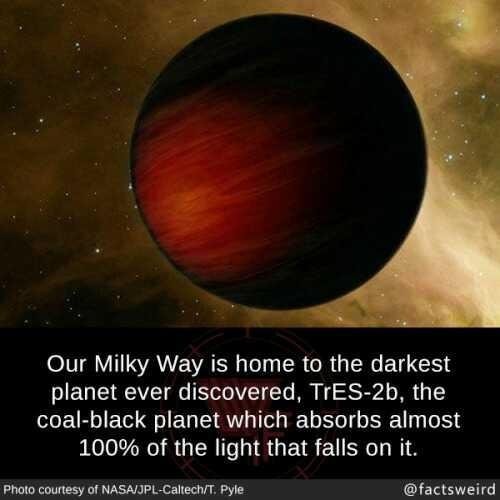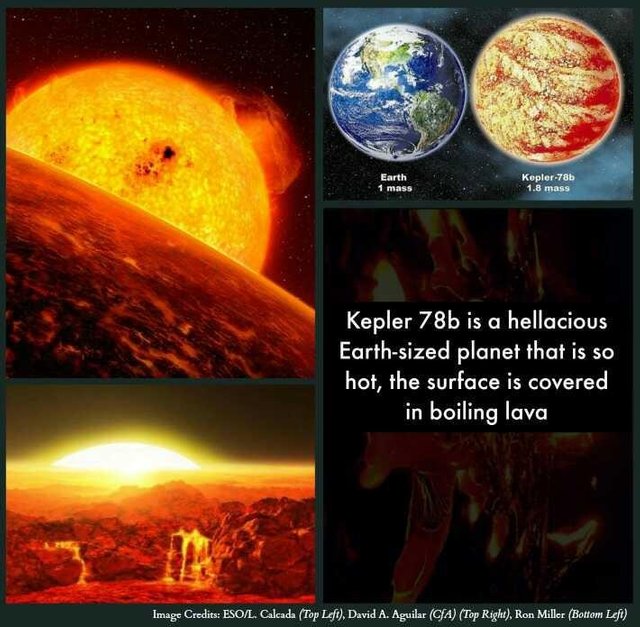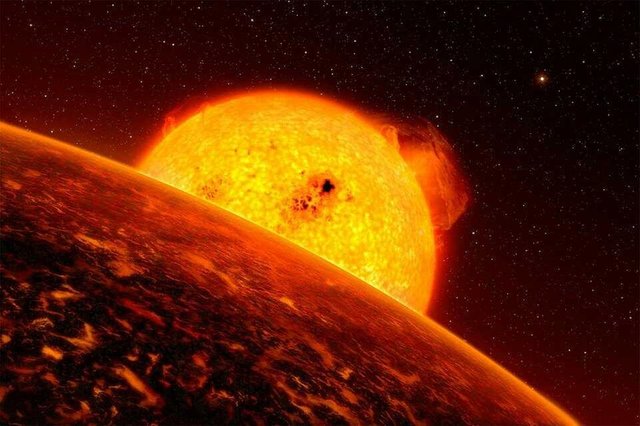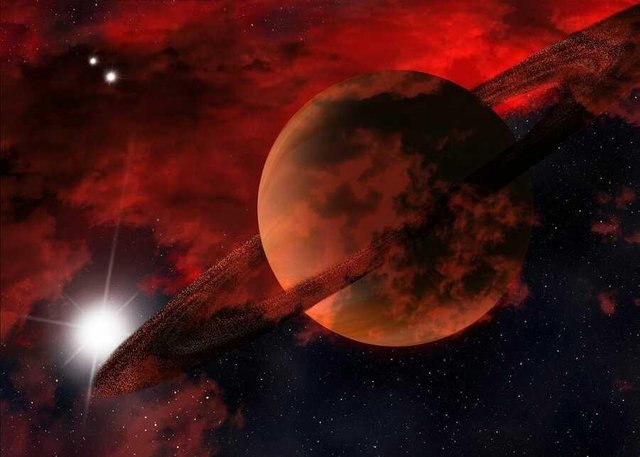HELL EXISTS, IT'S CALLED TRES-2B AND KEPLER-78B
TRES-2B (Blackest planet)
The planet in question is a giant the size of Jupiter called TrES-2b.
Researchers discovered this gas giant, which reflects less than 1 percent of the sunlight that falls on it, making it darker than any planet or moon seen so far.
TrES-2b is a planet known as "hot jupiter". This means that it is mostly gaseous and large.

source
But the curious fact of TrES-2b is its total darkness . In fact, this giant exoplanet that has 1.12 times the mass of Jupiter, has a color so black that it absorbs 99% of the light that comes from its star.
While Jupiter has clouds in linear white and red shapes, reflecting more than a third of the sunlight reaching it, TrES-2b apparently lacks reflective clouds, overheating its atmosphere to more than 1,800 degrees Fahrenheit (980 degrees Celsius) ) by a star that is only 3.1 million miles (5 million kilometers) away from it.
To estimate the existence of exoplanets, which are not visible to the naked eye by terrestrial telescopes, albedo is used, which measures brightness. In its transit before the host star, the variations of light show us the existence of worlds beyond the solar system.
"It's ridiculous how dark this planet is, how much to compare it to anything we have in our solar system," "It's darker than a black lump of coal. It's strange how this huge planet became so absorbing of all the light that comes to it. "
the study's lead author, David Kipping, an astronomer at the Harvard-Smithsonian Center for Astrophysics, said:
The researchers propose that chemicals that absorb light, such as vaporized sodium and potassium, or gaseous titanium oxide in the planet's atmosphere could help explain why it is so dark. However, none of them can explain why the planet is as involved as it is.
"It's a mystery as to what is causing it to be very dark," Kipping said. "There's a good chance it's a chemical that we do not even know yet."
Astronomers think that TrES-2b is anchored just like our Moon, so one side of the planet always faces the star. This would lead to changing phases as it orbits its star just as our moon grows, shrinks, reaches full or new, causing the total brightness to vary with time.
Although TrES-2b is currently the darkest known planet, similar worlds around other stars, certainly await discovery, the researchers said. For now, the idea is reinforced that our solar system can not be as typical as we once thought, with an extraordinary variety of worlds potentially filling our galaxy.
KEPLER-78B (demon planet)

source
Kepler-78B is slightly larger than Earth, it should not exist. Its size is extraordinary because it is the most similar to the Earth of all the exoplanets discovered. Its orbit, however, is extraordinary because it circles a star similar to the Sun 40 times closer than the planet Mercury . At that close distance, even the rock is liquid . Planetary formation models predict that no planet can form in such a close orbit , and planetary evolution models predict that Kepler-78B's orbit would decay, condemning the planet to merge with the mother star. Kepler-78B was discovered by the Kepler probe that orbits Earth.
Kepler 78b circulates its star in just 8.5 hours. It was also possible to determine the mass of the object 1.2 times larger than the mass of the Earth, which puts Kepler 78b in the group of the smallest known extrasolar planets.

source
Now scientists have managed to determine another feature of the planet - its mass. It turns out that beyond the size of the planet's mass is also similar to Earth's and is 1.7 Earth's mass. The average density of the planet is 5.3 grams per cubic centimeter, which is very close to Earth (5.5 grams per cubic centimeter).
These parameters indicate that the planet Kepler 78b consists mainly of rock and iron, just like Earth. However, the similarities end there. An orbit very close to the star means that extremely high temperatures prevail on this 700-year-old globe.
The central star of the Kepler 78 system, also referred to as TYC 3147-188-1, has characteristics similar to the Sun: a similar spectral type, mass of 0.84 solar masses and a radius estimated at 0.73 radius of the Sun. It is visible in the constellation of Cygnus and is within reach of amateur telescopes.
Be that as it may, these planets are true real hell for the human being . Nobody would like to find their bones in such a relentless places like this. But the truth is that with every exoplanet that is located, an ineffable truth grows, and that is there are all kinds of worlds in the universe that challenge science and human knowledge. And this is only the beginning.
